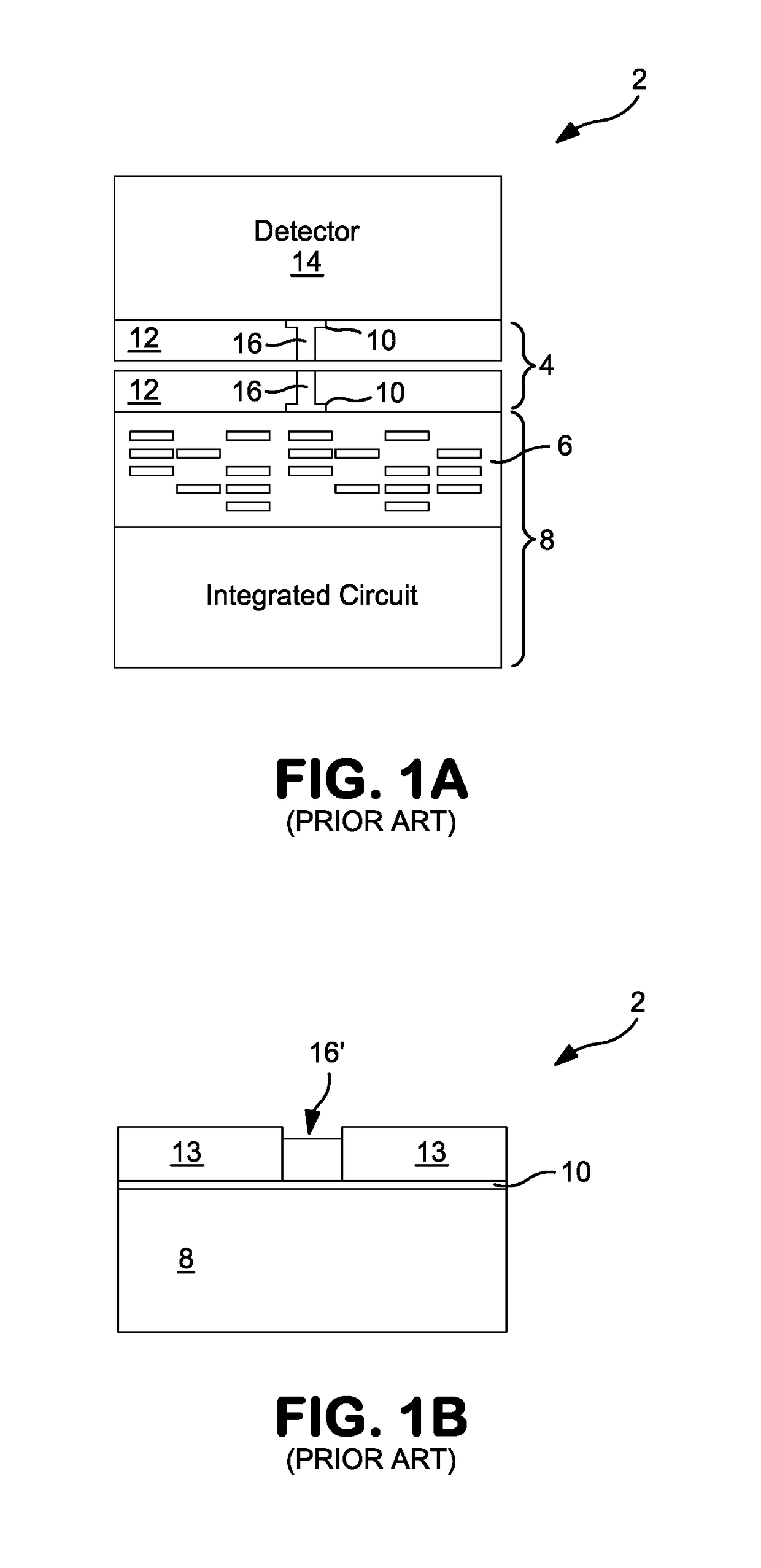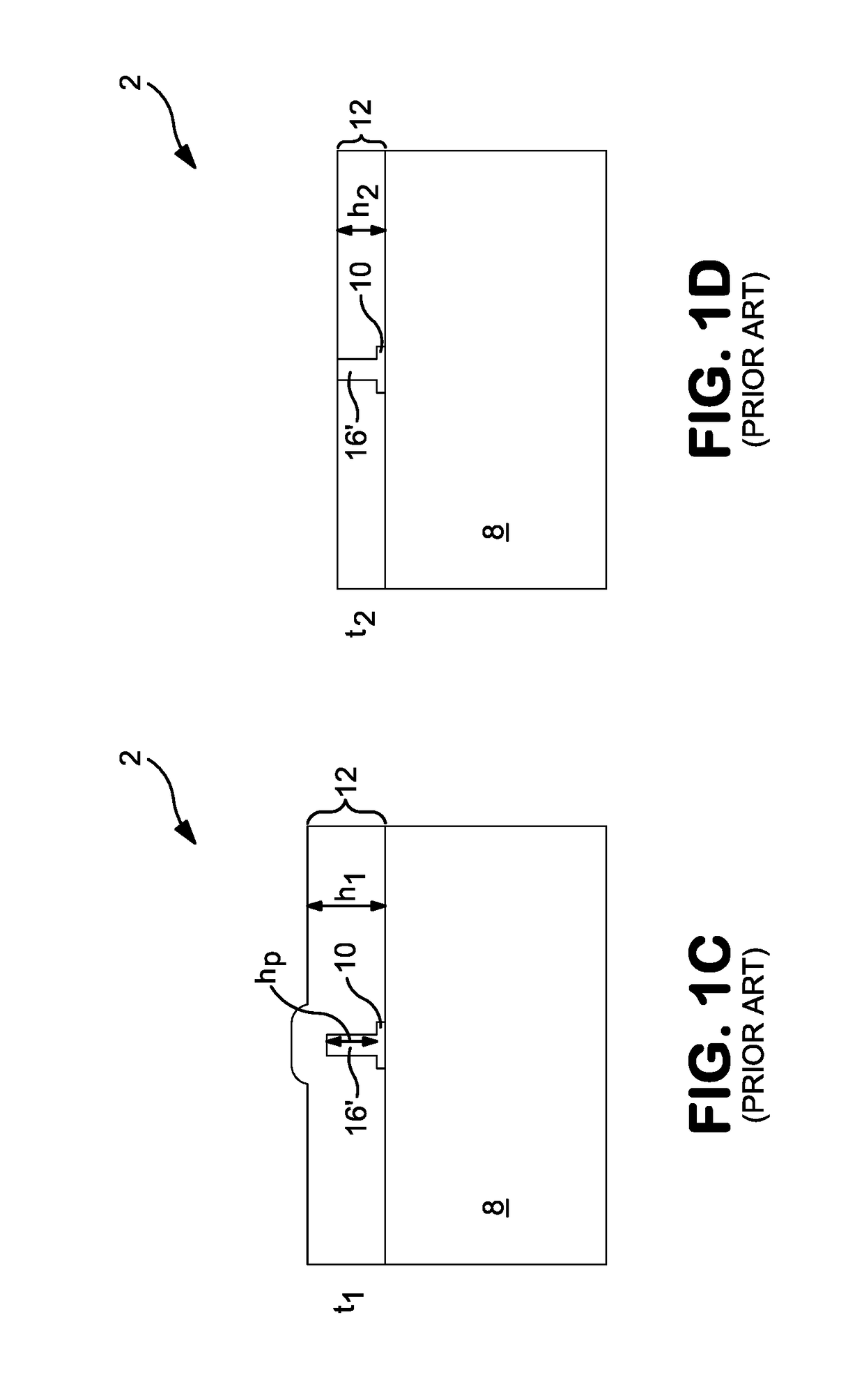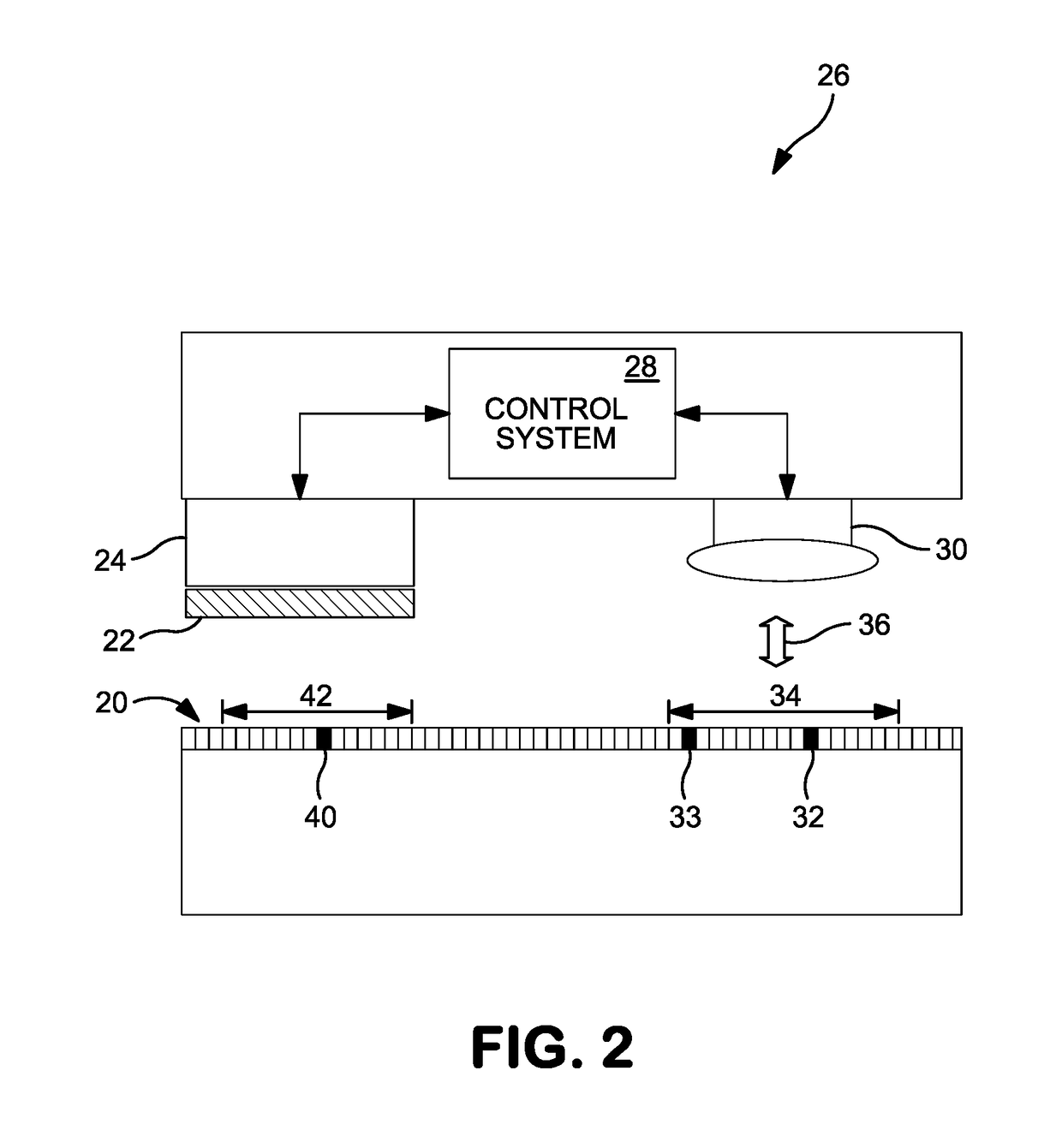In-situ calibration structures and methods of use in semiconductor processing
a calibration structure and semiconductor technology, applied in semiconductor/solid-state device testing/measurement, manufacturing tools, lapping machines, etc., can solve the problem that the optical interferometry method cannot be used in-situ to measure the actual height of the cmp thinned insulating layer b>12, and the accuracy of optical oxide height measurements on the roic is typically not available on the completed wafer. , to achieve the effect of reducing the varying field effect o
- Summary
- Abstract
- Description
- Claims
- Application Information
AI Technical Summary
Benefits of technology
Problems solved by technology
Method used
Image
Examples
Embodiment Construction
[0029]The following detailed description of example implementations refers to the accompanying drawings. The same reference numbers in different drawings may identify the same or similar elements.
[0030]Implementations will now be described that are particularly useful in the formation of 3D stacked wafers, such as wafer 2 in FIG. 1A, which may be a SiPIN hybrid sensor. The implementations include test structures and improved in-situ (e.g., on the same wafer), direct feedback monitoring of wafer and feature depth(s) during deposition and / or thinning processes, such as, respectively, electroplating and / or chemical mechanical polishing (CMP) processes. The implementations also provide methods for determining endpoints for such processes, and for in-situ adjusting of deposition and / or thinning operating conditions. The example implementations of deposition by metal plating and thinning by CMP polishing techniques are not intended to limit the environment of the invention in any way to s...
PUM
 Login to View More
Login to View More Abstract
Description
Claims
Application Information
 Login to View More
Login to View More - R&D
- Intellectual Property
- Life Sciences
- Materials
- Tech Scout
- Unparalleled Data Quality
- Higher Quality Content
- 60% Fewer Hallucinations
Browse by: Latest US Patents, China's latest patents, Technical Efficacy Thesaurus, Application Domain, Technology Topic, Popular Technical Reports.
© 2025 PatSnap. All rights reserved.Legal|Privacy policy|Modern Slavery Act Transparency Statement|Sitemap|About US| Contact US: help@patsnap.com



